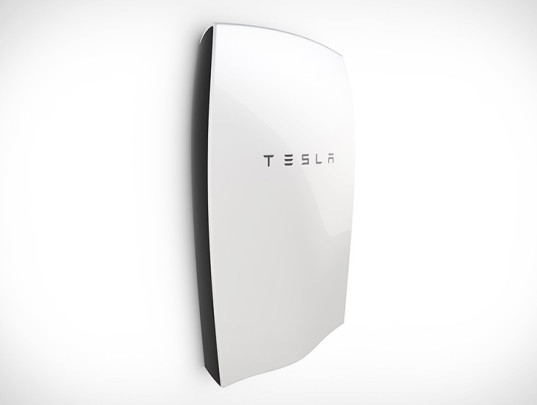In May 2015 Tesla Motors presented the world one of their newest inventions – Tesla Powerwall. Powerwall is a home battery meant to store the electricity produced by the solar panels. The Powerwall could also be charged from the grid when utility rates are low. Tesla also claims that their Powerwall may function as a protection against power outages, providing a back up electricity supply.
Everyone interested in energy self sufficiency know the simple steps of becoming independent of fossil fuels:
- All the appliances need to be turned into electricity
- All the electricity consumed needs to be produces by renewable sources
Easy isn’t it? During the day the solar panels produce the electricity from sun, the Powerwall is used to store it and and the electricity remains available even at night when the sun is not shining. The whole picture looks really great, however, there are several “buts” in the whole story. First of all, there is the capacity of the battery. With its size of 1300 mm x 860 mm x 180 mm Power Wall has capacity of 7 kWh. A typical household inhabited by family with 4 people consumes yearly 3500 kWh, which by simple calculation divides to 10 kWh per day. Needed to say that this number contains the whole energy mix we are provided by, from electricity to gas. By a simple comparison we can come to a conclusion that 1 Powerwall will not provide enough supply for 1 regular day of the family if used as the only source. The question of the efficiency of Powerwall as a back up electricity storage in case of blackout thus remains slightly unanswered.
Nowadays if houses in summer produce more electricity than they are not able to directly consume, the excess of the electricity is sent to the grid. Such thing would however not be possible at all if all the houses turned to zero energy. Tesla promises to go net zero and even off grid by using their Powerwalls. Before jumping to enthusiastic conclusions about being independent from the energy systems, one must realize that with this system this could be possible almost only in places, where there is a 100% chance of sun every day, through PV panels charging the batteries so that the energy could be used in the evening.
However, still a problem of storing the electricity for times of need needs to be solved; especially in terms of season. Tesla realizes the battery issue and thus they continue in this journey by building a mega project in Nevada called Gigafactory. It’s a $5 billion lithium-ion battery factory, powered entirely by on-site solar, wind and geothermal power, employing 6500 people when built. When storing the electricity, of course there is always the possibility of purchasing more Powerwalls and create thus a bigger battery able to supply the household for longer time. Of course the Powerwalls are not already a simple small appliance and we cannot have tens of them in our houses. Moreover, the Powerwalls uses the same type of batteries as Tesla cars do, lithium-cells; and thus use quite noticeable amounts of metals, finite resources on Earth. A conservative approach states that in most consumer products such batteries last for between 300 and 500 discharge/charge cycles. Such batteries are of course recyclable, however as with most of the products, the process is down cycling – a metal of lower quality is obtained in the second round compare to the input product.
Tesla’s journey and vision are by no means admirable. The Power Walls, Giga factory or Tesla cars are certainly steps in the right direction, however these are just the beginnings. The problem of sustainable seasonal storage of electricity still remains to be unsolved and the one who cracks this nut will for sure change the whole world of energy supply.
References:
Tesla (n.a.). Power Wall. Retrieved from https://www.teslamotors.com/powerwall
Battery University (n.a.). How to Prolong Lithium-based Batteries. Retrieved from http://batteryuniversity.com/learn/article/how_to_prolong_lithium_based_batteries
Urban, T. (2015). How Tesla Will Change the World. Retrieved from http://waitbutwhy.com/2015/06/how-tesla-will-change-your-life.html
